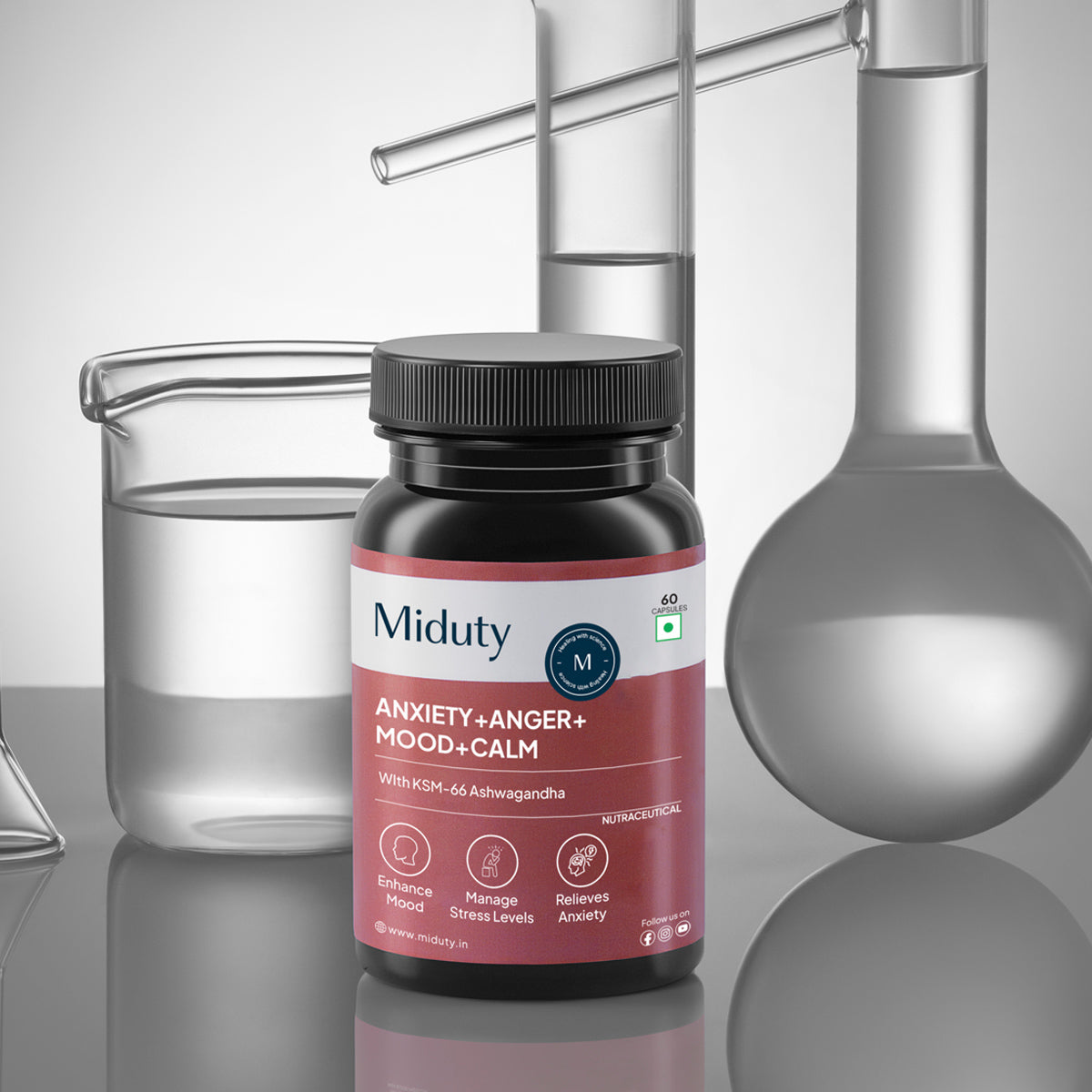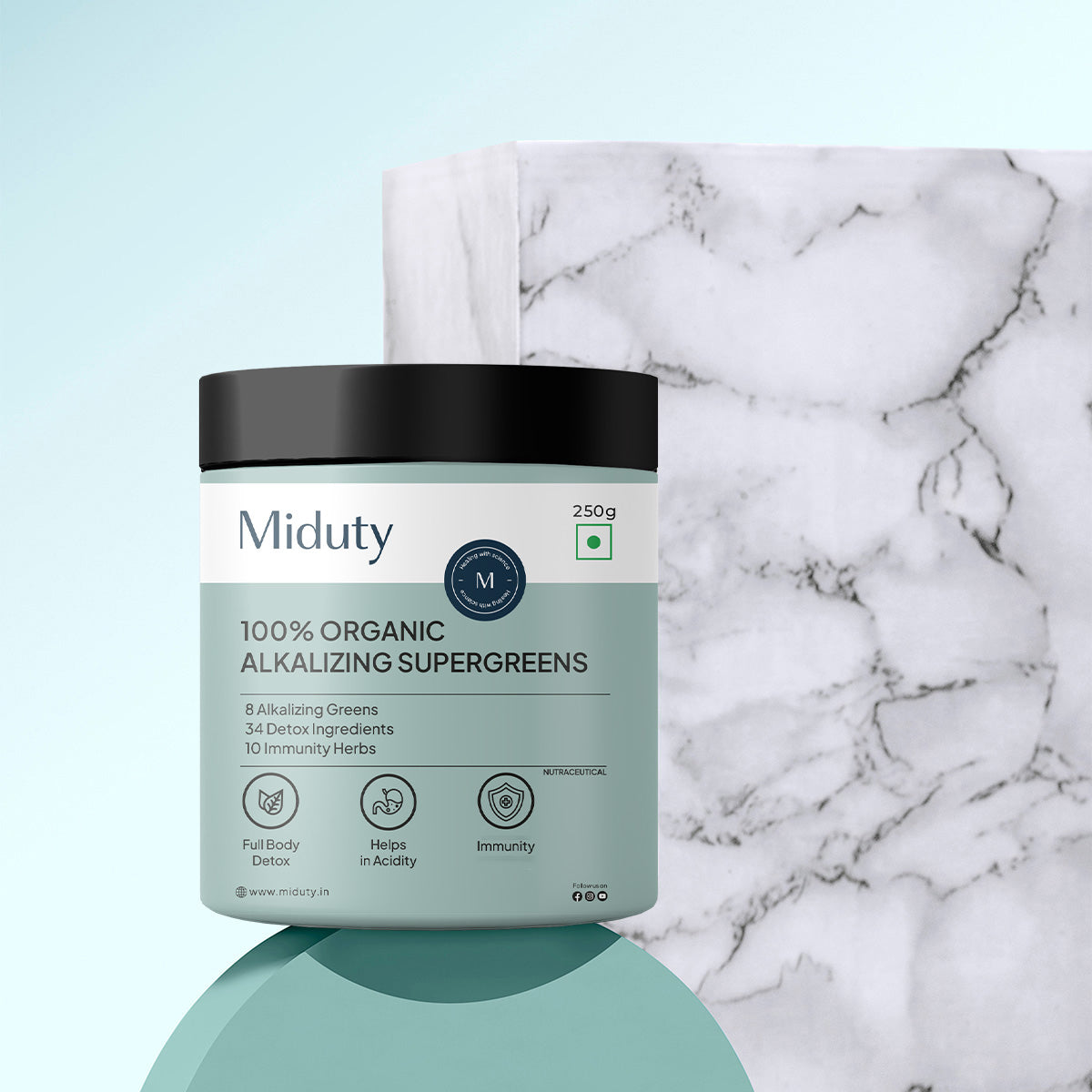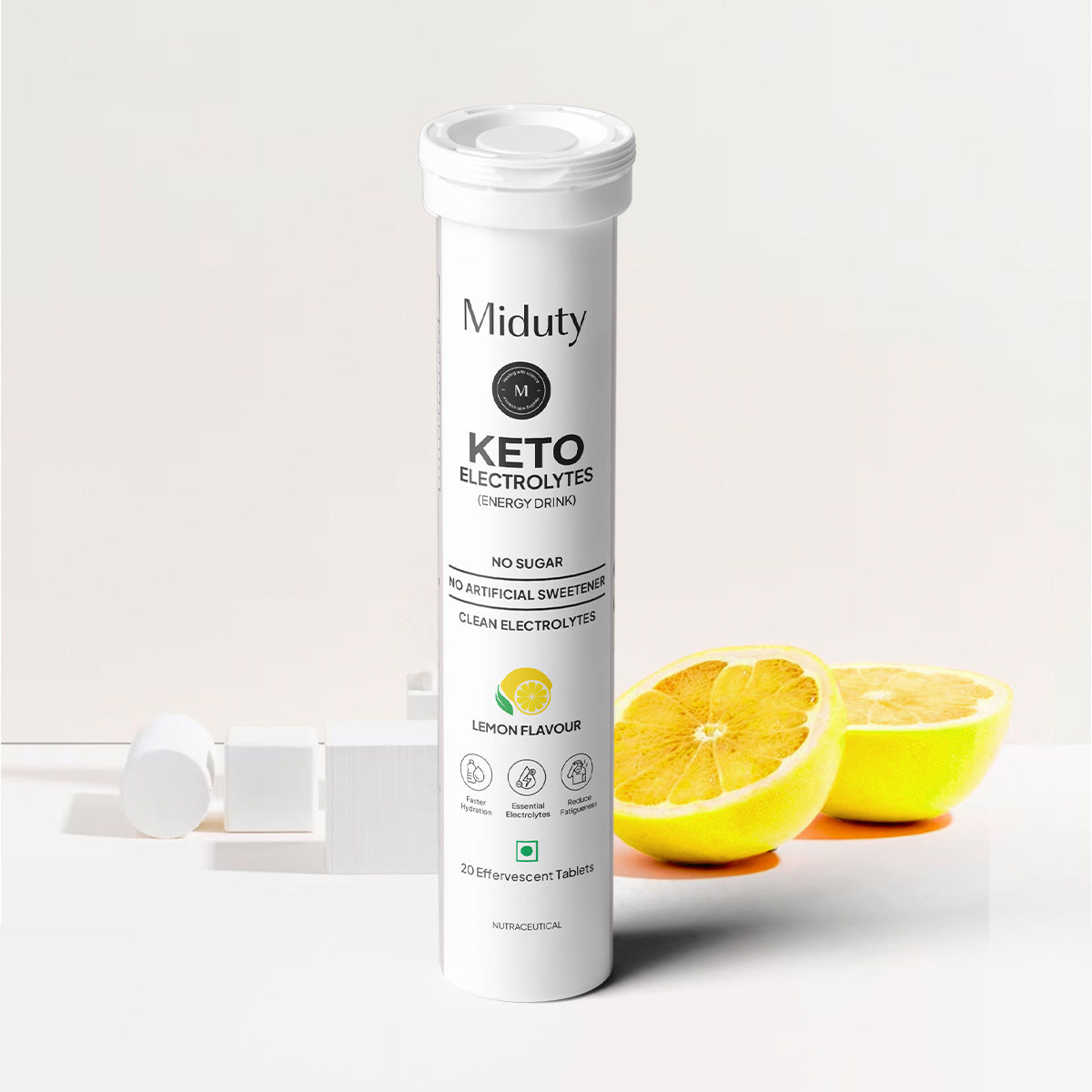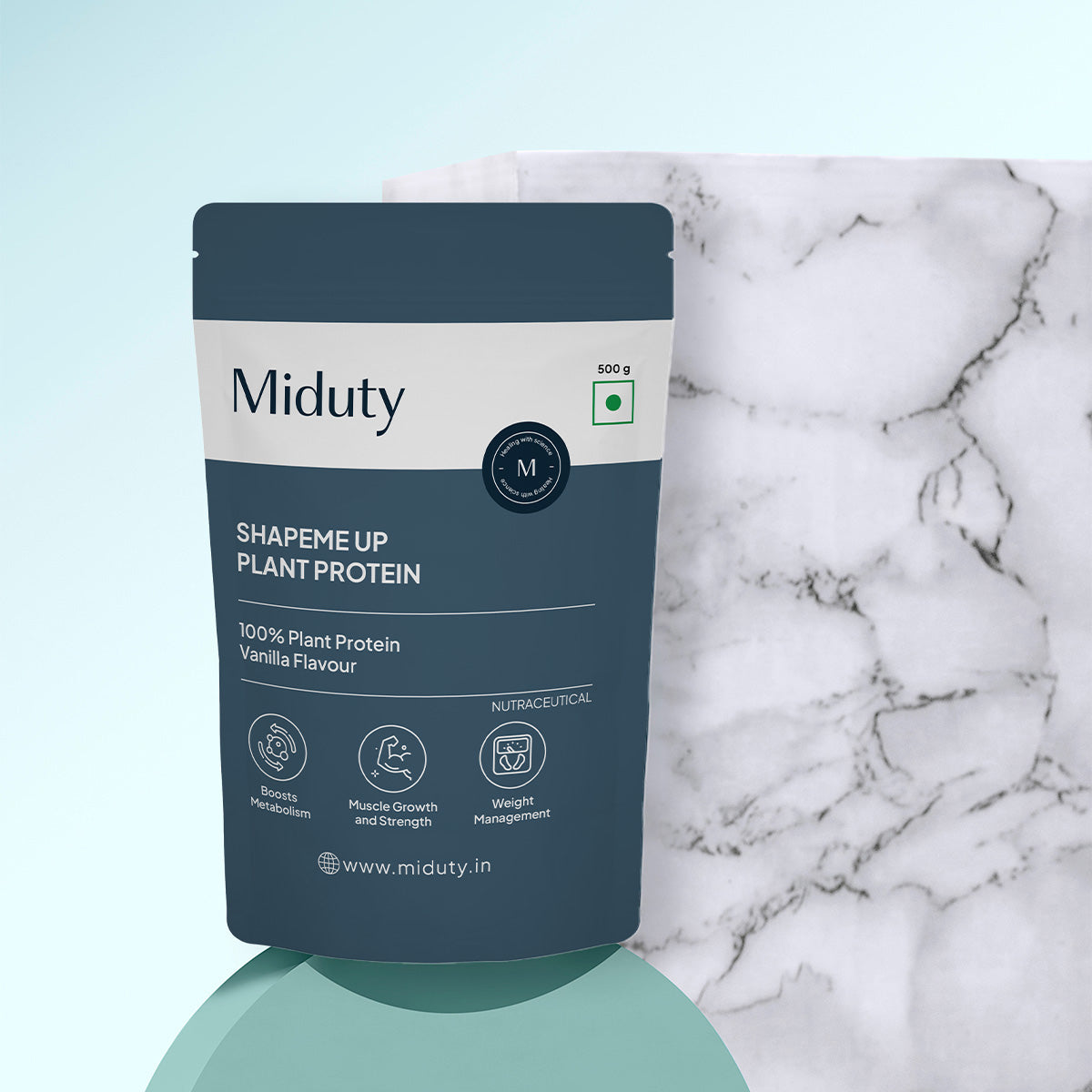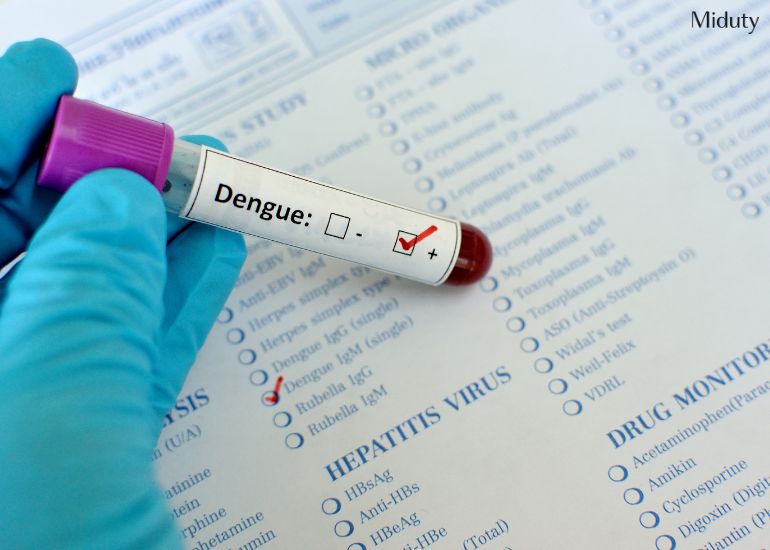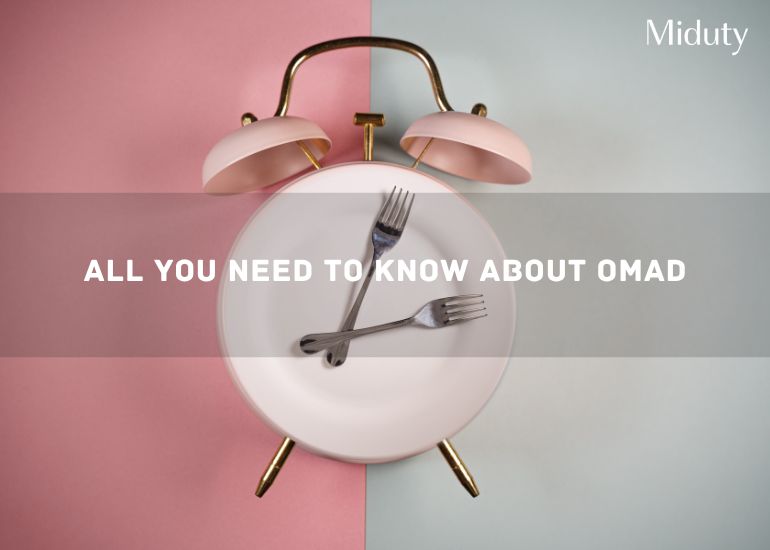
Everything You Need to Know About One Meal A Day (OMAD)
Key Takeaways
1. One Meal a Day = Big Results – OMAD can supercharge weight loss, energy, and digestion with just one well-planned meal daily.
2. Turns Fat into Fuel – Long fasting hours help your body burn stubborn fat and reduce inflammation naturally.
3. Supports Heart & Sugar Health – OMAD lowers bad cholesterol and helps manage Type 2 Diabetes.
4. No Starving, Just Smart Eating – Eat a full, satisfying meal and stay full for hours without cravings.
5. Simple Yet Powerful – A 22:2 fasting formula that’s easy to follow and hard to undo once results show.
Have you been looking for a diet to help you achieve your fitness goals?
You've probably heard of intermittent fasting, which is becoming increasingly popular as a weight loss trend.
The One Meal A Day (OMAD) diet, on the other hand, takes intermittent fasting to another level. Do you know how? Let us discuss.
The OMAD, or "One Meal A Day," diet is gaining popularity as a new type of fasting. In simple words, the OMAD means that you just need to consume a single meal during the day. It doesn't describe what you should eat or what time you should eat, but simply directs you to eat once a day. It may appear simple enough, but following this technique can be challenging.
Read on for a brief overview of how to start an OMAD, the benefits of only eating once a day, and some of the drawbacks you should be aware of before deciding if this fasting style is right for you.
What is a One Meal A Day (OMAD) Diet?
The one meal a day (OMAD) plan refers to a diet plan where a person fasts for long hours and eats only one meal per day.
It is also referred to as the 22:2 diet, which means that you break your 22-hour fast by eating within 1-2 hours.
This limits how many calories you can eat throughout the day.
As a result, your digestion gets better, you lose weight, and you don't feel as fatigued. You only need to eat healthily during that one to two-hour window and fast for the next 22 hours.
The majority of people following the OMAD diet only eat at dinnertime, but you are free to eat whenever it is most convenient for you.
In some situations, individuals may be permitted to have black coffee or green tea as well as a few solid items throughout the day, such as an egg. Because everybody reacts uniquely to the same diet plan, this is done for the person's safety.
How Does the One Meal A Day (OMAD) Diet Work?
The idea behind the one meal a day diet is to limit calories and eat only one nutritious, low-calorie meal per day (or night).
When you fast for such long hours, your body begins to burn the excessive fat stored in it and thus, helping in promoting weight loss. Additionally, it avoids constipation and enhances digestion and absorption, which favorably impacts fat loss.
What Are the OMAD Benefits?
1. Weight Loss

You need to develop an energy shortage if you want to lose weight. You can achieve this by either burning more calories or consuming fewer calories. No matter how you do it, calorie restriction will result in fat loss.
Simply because an OMAD diet includes consuming fewer calories than they would during a typical eating pattern, they are likely to lose weight. [1]
2. Helps in Type II Diabetes
The three main contributors to type II diabetes are genetics, an unhealthy lifestyle, and obesity. Patients with type II diabetes who followed OMAD lost weight, consumed fewer calories, and had lower post-meal glucose and insulin levels. [2]
3. Helps in Protecting Heart
The best benefit of an OMAD diet is that it enhances heart health by lowering your bad cholesterol (LDL) and fat that gets deposited in your arteries. [3]
4. Prevents Weight Regain
This is what separates the OMAD diet from all other diets and what makes intermittent fasting unique. Of course, losing weight is a journey filled with many highs and lows. You will be less likely to gain the weight you lose if you can stick to the OMAD diet twice a week. [4]
5. Keeps You Energetic

Intermittent fasting will indeed provide you with energy all day long. The main explanation behind this is that your body starts functioning better as soon as you get rid of the fat deposits that lead to inflammation. In turn, this keeps your cells active and reduces your feeling of tiredness. [5]
6. Keeps a Feeling of Fullness
You won't feel starved while following the OMAD diet. You will have a satisfying, healthful, and delicious meal that will help you overcome your addiction to processed foods. Naturally, you must stick to a "foods to avoid" list to protect your heart, liver, and kidneys.
Foods to Choose and Avoid on an OMAD Diet

Foods to Eat:
1. Fresh Vegetables: Include Carrot, Broccoli, Cabbage, Beetroot, Cauliflower, Lettuce, Spinach, Kale, White, and Sweet Potatoes.
2. Protein: Chicken Breast, Fish, Mushrooms, Beans, Legumes, and Eggs.
3. Whole Grains: Brown Rice, Bajra, Rajgira or Amaranth, Sabudana.
4. Fats & Oils: Olive Oil, Desi Ghee and Cold Pressed Extra Virgin Coconut Oil.
5. Nuts & Seeds: Almonds, Pistachios, Walnuts, Sunflower seeds, Pumpkin Seeds
6. Herbs: Rosemary, Ginger, Garlic, Onion, Oregano, Turmeric, Cumin, Cardamom, Chilly Flakes, Cloves
7. Beverages: Water, Homemade Lemonade, Homemade Electrolyte, Coconut Water and Bullet Coffee. You must be thinking What is Bullet Coffee? Fret not, I will share its recipe in the end.
Foods to Avoid:
1. Fruits: Grapes, Mangoes, Jackfruit, and Pineapple should be avoided. If you still want to consume, consider a very low amount.
2. Dairy: Avoid Milk and Yogurt, even if it is Low in Fat.
3. Whole Grains: Avoid White Rice. If you are not sure that you can completely remove white rice from your diet, then try to consume it with at least 4-5 different veggies.
4. Fats and Oils: Avoid Dalda, Vegetable oil, Mayonnaise.
5. Beverages: Packed Juices, Soda, Energy Drinks, and Diet Soda.
What To Include in Your OMAD Diet?
1. Include at least five different vegetable varieties.
2. Include sources of lean protein in your diet. You may occasionally eat a decent amount of mutton, though.
3. Consume a lot of plant protein, such as that found in nuts, seeds, kidney beans, and entire pulses, if you're a vegetarian.
4. To help with digestion, eat half a bowl of curd or a cup of buttermilk.
5. Enjoy some unsalted nuts. Be careful not to use them excessively.
6. A bar of 80% dark chocolate is permissible.
7. Maintain your fluid intake throughout the fasting period.
8. Throughout the fasting period, you may consume 3 to 4 cups of green tea or bullet coffee.
Bulletproof Coffee Recipe
1. Boil a mug of water, then add a tablespoon of coffee to it.
2. Add half a teaspoon of ghee, unsalted butter, and coconut oil to the coffee and water after it begins to boil.
3. Allow for a few minutes of boiling before filtering into a cup.
Routine for an OMAD Diet
Make sure to divide your time into two windows when following the OMAD diet: the fasting window, which is 22 hours long, and the eating window, which is 2 hours long.
What foods may you eat during the fasting window to maintain your energy level throughout the day? Here's what to know:
Fasting Window:
1. Start your day by consuming three to four glasses of water. Following that, you can practise some gentle stretches and yoga. You can also consume lukewarm water with Himalayan pink salt. Your body's electrolytes will be maintained with the help of Himalayan pink salt.
2. You can drink bulletproof coffee during breakfast. Bulletproof coffee, or BPC, is a delicious and healthy option or side dish that goes well with a low-carbohydrate, High-Fat diet.
It is as healthy as coffee can be because it contains natural healthy fats from desi ghee, butter, coconut oil, and MCT Oil that help the brain in receiving the proper amount of nutrition, prevent hunger, and prevent brain fog. If you want your energy to last longer with bullet coffee, you can take Miduty Anxiety+Anger+Mood+Calm, a supplement that contains L-theanine, which helps reduce stress levels.
Eating Window:
1. Take Apple Cider Vinegar 15 minutes before you begin to eat.
2. You can also perform a mild workout after taking vinegar as ACV assists in weight loss, maintains the pH of the body and minimizes muscle pain and low energy.
3. Begin your eating window with a protein shake. You can also soak some seeds, such as pumpkin seeds or chia seeds, and take them with you.
4. As for your meals, you need to make sure that your diet includes low carbs, high protein, healthy fats and high fibre foods. I have mentioned above the foods you can eat and avoid during an OMAD Diet.
You can also: download my Free Intermittent Fasting Diet Plan
How to Workout When on an OMAD Diet?
1. At first, you won't have the energy to exercise after such a lengthy fast. Additionally, you Work Outwon't be able to put forth the necessary effort for your workout because of mental tiredness. To keep your muscles active, practice yoga or stretching activities.
2. You can gradually start including muscle-toning exercises once you've gotten used to this OMAD routine to stop your skin from drooping.
3. Every day, whether you're following the OMAD diet or not, meditate. You can do it the conventional way while running or walking, or both.
4. Always work with your trainer to create a routine that is right for you, taking into consideration your body type and medical history.
Frequently Asked Questions on OMAD
Q1. How to take Supplements on an OMAD diet?
Categorise your supplements into two parts: Supplements to consume in the morning and Supplements to consume after your meal. Take the morning supplements after Bullet Coffee in the morning during the fasting window and the evening supplements in the eating window after your meals.
Q2. Can I follow an OMAD Diet if I am pregnant?
No, eating one meal a day is not enough, I repeat. Typically, you just require an extra 300–500 calories while you are pregnant. You must enjoy your motherhood.
Q3. How do I practise an OMAD diet if I am diabetic?
It is important for people who are prediabetic or have diabetes to start slow with 2 Meals per day as OMAD results in a decrease of insulin in your body, and too many low levels of insulin can cause problems in the body.
References


